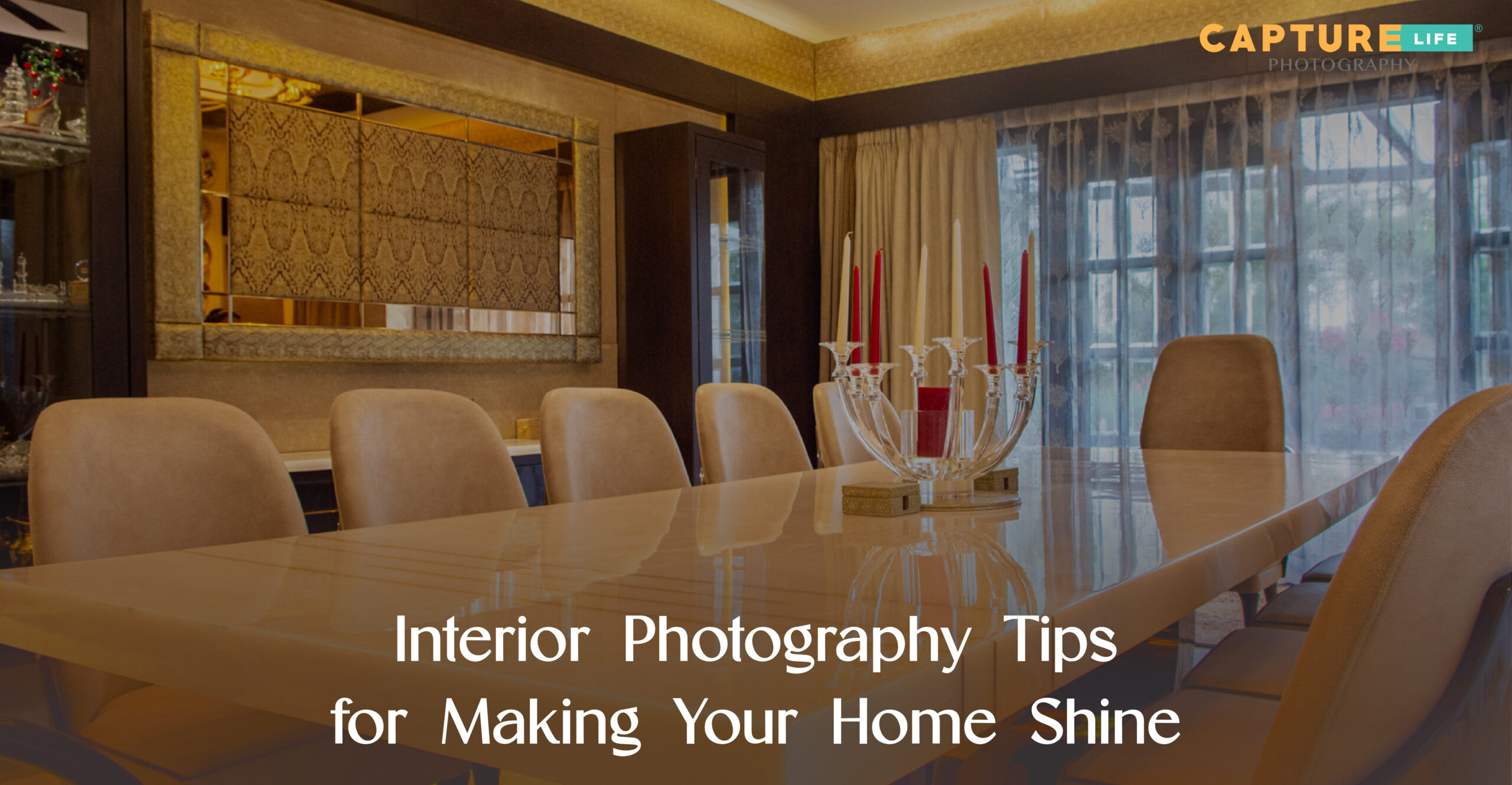
22 Feb Mastering Interior Photography: Tips to Capture the Essence of Your Home
There aren’t many topics as interesting and intimate in photography as our homes’ interiors. Interior photography presents a special chance to highlight the personality and charm of your house, regardless of whether you’re an aspiring photographer or just want to capture the beauty of your living area on camera. But it takes more than just pointing and shooting to become an expert interior photographer. It calls for an acute sense of detail, knowledge of light, and the capacity to evoke feelings through imagery.
If you are looking for interior photographers, then Studio Capture Life offers best-in-class photographers for all your interior photography requirements!
In this blog, we’ll look at some professional tips and methods to help you take gorgeous interior pictures that really show off your house.
Preparation is Key
Set up the area you’ll be shooting in advance of even picking up your camera. Straighten up furniture, get rid of clutter, and clean up any spills. Pay close attention to the little things: fluff cushions, carefully organize décor, and make sure all surfaces are spotless and glossy. In addition to looking better in pictures, a well-organized area will simplify your work as a photographer.
Choose the Perfect Angle
Try a variety of angles to determine which one best suits each room’s layout. Photographing from a corner of the room frequently yields a wider angle and elongates the impression of space. But don’t be scared to use your imagination; though; taking pictures from above or below can emphasize unique architectural details and create visual interest.
Utilize Natural Light
When it comes to interior photography, natural light is your best friend. Try to take pictures during the day while the light is coming in through the windows. Align yourself so that the light is evenly distributed over the room, coming from behind you. Steer clear of direct midday sunshine as it tends to wash out colors and cast harsh shadows. Instead, for the most pleasing effects, go for gentle, diffused light.
Use a Tripod
Whenever possible, use a tripod to guarantee clean, sharp pictures. By doing this, you’ll be able to reduce camera shake and use shorter shutter speeds without compromising the clarity of your images. You can experiment with longer exposures with a tripod, which might be helpful in low-light conditions.
Focus on Composition
When framing your photographs, consider composition. Within the frame, keep an eye out for leading lines, symmetry, and balance. Think about the rule of thirds, which states that important items should be positioned along these lines or at their intersections, splitting the frame into horizontal and vertical thirds. This may result in a composition that is more lively and eye-catching.
Highlight Unique features
Don’t forget to take pictures of the little features that provide character to your house. These little accents, which may be anything from an oddball piece of art to a delightful architectural element, give your room originality and character. To bring these characteristics to life in your images, get up close and try some different camera angles.
Try Different Lenses
When it comes to interior photography, different lenses may produce remarkably different outcomes. Wide-angle lenses work wonders for enlarging small rooms and capturing sweeping perspectives. But watch out for distortion: keep crucial pieces away from the frame’s edges to prevent them from looking deformed or stretched. On the other hand, a longer focal length lens can draw attention to certain details and compress space in a room.
Capture in RAW Format
Instead of JPEG, photograph in RAW format for the most freedom and control over your photos. RAW files are considerably more information-rich and offer greater post-processing modification options. This can be very helpful when modifying color temperature, white balance, and exposure to get the desired effect.
Try A Few Different Post-Processing Techniques
Post-processing can elevate your interior images to a new level. Play around with the exposure, contrast, and color balance with editing software. If you want to straighten lines and fix distortion, think about using lens adjustments. Aim for a natural, genuine style that faithfully captures the space; don’t go overboard.
Conclusion
Interior photography requires time and practice to master, just like any other ability. If the results of your initial projects are not precisely what you had hoped for, don’t give up. Continue trying new things, picking up from your errors, and honing your skills. If you put in the effort and persevere, you can soon be taking gorgeous interior pictures that highlight the features of your house.
If you liked reading about the tips and tricks for interior photography, do visit our website for more such blogs!


